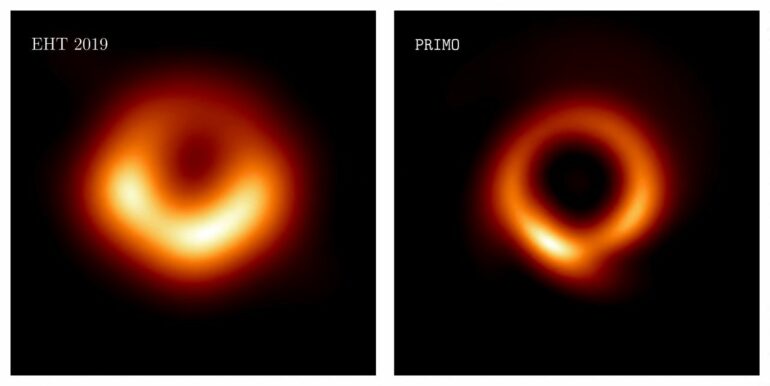A team of researchers has used machine learning to refine the first photograph of a black hole. In a report published recently in The Astrophysical Journal Letters, it was revealed that the updated image shows a narrower ring of light and matter surrounding the black hole at the center of Messier 87, a galaxy located more than 53 million light years away from Earth.
The initial images were captured in 2017 by the Event Horizon Telescope, a network of radio telescopes located around the world that work together to form an imaging tool the size of a planet. The first image appeared like a blurry doughnut, according to NPR, but the researchers utilized a new approach known as PRIMO to reconstruct a more precise image. PRIMO is a “novel dictionary-learning-based algorithm” that “recovers high-fidelity images even in the presence of sparse coverage” by training on generated simulations of more than 30,000 black holes. In other words, it uses machine learning data based on what we know about the physical laws of the universe, particularly black holes, to generate a more refined and accurate image from the raw data recorded in 2017.
Black holes are enigmatic and bizarre regions of space where gravity is so powerful that nothing can escape, formed when dying stars collapse into themselves under their gravitational pull. The collapse compresses the star’s mass into a tiny space. The event horizon, the boundary between the black hole and its surrounding mass, is a point of no return from which anything that crosses it, including light, matter, and even Matthew McConaughey, will not return.
“We learn the correlations between different parts of the image,” said Lia Medeiros, an astrophysicist and author of the paper, from the Institute for Advanced Study in Princeton, NJ, in an interview with NPR. “And so we do this by analyzing tens of thousands of high-resolution images that are created from simulations. If you have an image, the pixels close to any given pixel are not completely uncorrelated. It’s not that each pixel is doing completely independent things.”

